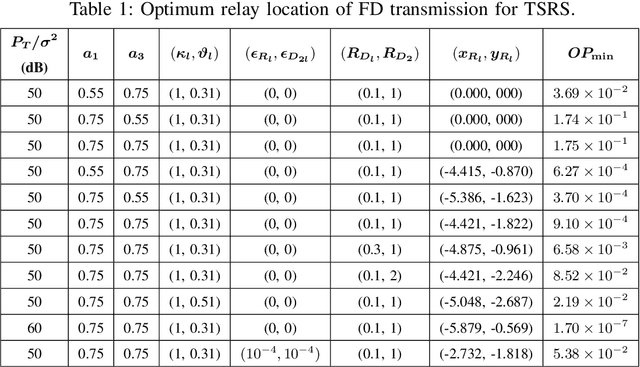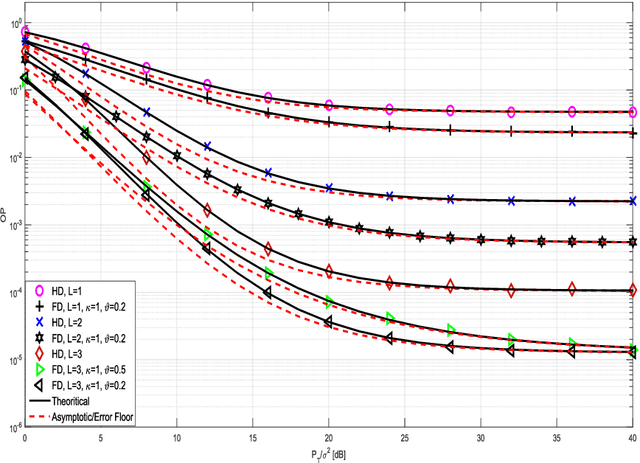Mehmet Akif Durmaz
An Experimental Study of NOMA for Connected Autonomous Vehicles
Apr 03, 2023Abstract:Connected autonomous vehicles (CAV) constitute an important application of future-oriented traffic management .A vehicular system dominated by fully autonomous vehicles requires a robust and efficient vehicle-to-everything (V2X) infrastructure that will provide sturdy connection of vehicles in both short and long distances for a large number of devices, requiring high spectral efficiency (SE). Power domain non-orthogonal multiple access (PD-NOMA) technique has the potential to provide the required high SE levels. In this paper, a vehicular PD-NOMA testbed is implemented using software defined radio (SDR) nodes. The main concerns and their corresponding solutions arising from the implementation are highlighted. The bit error rates(BER) of vehicles with different channel conditions are measured for mobile and stationary cases. The extent of the estimation errors on the success rate beyond the idealized theoretical analysis view is investigated and the approaches to alleviate these errors are discussed. Finally, our perspective on possible PD-NOMA based CAV deployment scenarios is presented in terms of performance constraints and expectancy along with the overlooked open issues.
Performance Analyses of TAS/Alamouti-MRC NOMA in Dual-Hop Full-Duplex AF Relaying Networks
Sep 25, 2021



Abstract:In this paper, the performance of a power domain downlink multiple-input multiple-output non-orthogonal multiple access system in dual-hop full-duplex (FD) relaying networks is investigated over Nakagami-$m$ fading channels by considering the channel estimation error and feedback delay. Particularly, in the investigated system, the base station equipped with multiple antennas transmits information to all mobile users by applying conventional transmit antenna selection/Alamouti-space-time block coding scheme with the help of a dedicated FD amplify-and-forward relay. The received signals at mobile users are combined according to maximal-ratio combining technique to exploit benefits of receive diversity. In order to demonstrate the superiority of the proposed system, outage probability (OP) is investigated and tight lower bound expressions are derived for the obtained OP. Moreover, asymptotic analyses are also conducted for ideal and practical conditions to provide further insights about the outage behavior in the high signal-to-noise ratio region. Finally, theoretical analyses are validated via Monte Carlo simulations and software defined radio based test-bed implementation.
Relay Selection with Imperfect SIC for FD/HD NOMA Cooperative Networks over Nakagami-$m$ Fades
Mar 23, 2021



Abstract:In this work, a non-orthogonal multiple access (NOMA) based transmission between two sources and two end-users is examined over independent non-identically distributed (i.n.i.d.) slow Nakagami-$m$ fading channels, where a single relay using decode-and-forward (DF) protocol is selected out of a set of full-duplex/half-duplex (FD/HD) multiple relays in accordance with the quality of service criterion. Two relay selection (RS) strategies, selecting a relay to maximize data rate of user 1 at selected relay and selecting a relay out of a set of relays providing service quality for user 1 to maximize data rate of user 2, are analyzed. Additionally, not only perfect successive interference cancellation (pSIC) but also imperfect SIC (ipSIC) is considered. The exact and asymptotic outage probability (OP) expressions are derived and validated via Monte Carlo simulation technique. Unlike existing works, our expressions are unique and valid for all cases such as FD and HD together with pSIC and ipSIC, i.e. expressions are not given separately but in a single compact form. Effect of each component such as pSIC, ipSIC, and self-interference (SI) for FD transmission on error floor of OP is demonstrated. Moreover, the optimum relay location is illustrated for a plenty of scenarios consisting of combination of different power allocations, data rates, pSIC/ipSIC, and total transmitted powers.
 Add to Chrome
Add to Chrome Add to Firefox
Add to Firefox Add to Edge
Add to Edge